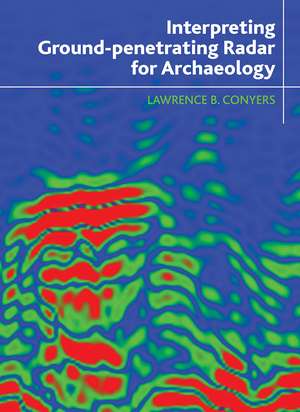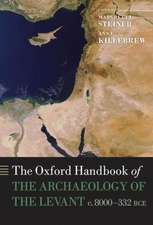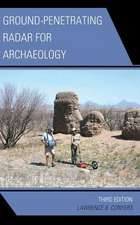Interpreting Ground-penetrating Radar for Archaeology
Autor Lawrence B. Conyersen Limba Engleză Paperback – apr 2014
Preț: 361.00 lei
Preț vechi: 406.77 lei
-11% Nou
Puncte Express: 542
Preț estimativ în valută:
69.11€ • 71.07$ • 57.33£
69.11€ • 71.07$ • 57.33£
Carte tipărită la comandă
Livrare economică 20 februarie-06 martie
Preluare comenzi: 021 569.72.76
Specificații
ISBN-13: 9781611322170
ISBN-10: 1611322170
Pagini: 220
Ilustrații: over 200 full color illustrations, references, index
Dimensiuni: 210 x 280 x 15 mm
Greutate: 0.92 kg
Ediția:1
Editura: Taylor & Francis
Colecția Routledge
Locul publicării:Oxford, United Kingdom
ISBN-10: 1611322170
Pagini: 220
Ilustrații: over 200 full color illustrations, references, index
Dimensiuni: 210 x 280 x 15 mm
Greutate: 0.92 kg
Ediția:1
Editura: Taylor & Francis
Colecția Routledge
Locul publicării:Oxford, United Kingdom
Cuprins
Chapter 1 Introduction; Chapter 2 Basic Method and Theory of GPR; Chapter 3 A Personal History of GPR Interpretation; Chapter 4 Geological Complexities; Chapter 5 Cultural Complexity; Chapter 6 Attenuation and Depth of Penetration; Chapter 7 Historic Sites; Chapter 8 Graves and Cemeteries; Chapter 9 Prehistoric Sites; Chapter 10 Caves, Tunnels, and Void Spaces; Chapter 11 Using GPR Interpretations to Understand People; Chapter 12 Interpretation in Collaborative Ventures; Chapter 13 Conclusion;
Descriere
Using 20 years of data from more than 600 ground-penetrating radar surveys, Lawrence Conyers provides the consumer of GPR studies with basic information on how to read and interpret GPR data for identifying subsurface remains and do cultural analysis.









